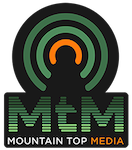The NBA’s draft lottery won’t take place Tuesday in Chicago as originally planned, but whenever it does happen it is likely to look the same as last year, league sources told ESPN.
Since play was suspended March 11 due to the coronavirus pandemic, teams at the top of the standings have been curious about the league restarting because they are in pursuit of a championship. But for teams at the bottom of the standings, the focus has been on what the lottery will look like.
Although some will inevitably grumble about the order being determined by an incomplete regular season, the belief among several executives is that the lottery will remain as it was scheduled to be before the pandemic.
“I wouldn’t expect changes,” one executive with a lottery-bound team said.
Executives brought up several potential reasons why the lottery wouldn’t be tweaked because of the unusual circumstances the league finds itself in. One was the fact that every team in the league has already played somewhere between 63 and 67 games, or over 75 percent of its season — a more than representative sample. Although things likely would have shifted around over the final few weeks of the regular season, there isn’t a credible argument that there haven’t been enough games played to fairly set the order.
Another was the changes the league implemented to the lottery last year. Under the old system, the top three picks in the draft were determined by the lottery, with the team with the worst record having a 25 percent chance to win the right to the first pick in the draft, with a sliding scale for each subsequent pick.
Under the new system, the top four spots are selected via the lottery, and the odds were drastically flattened. The teams with the first three records all were given 14 percent odds of winning the top pick, with teams from fourth through 13th in the lottery all having their odds of moving up increased.
The league tried twice to implement these changes — first in 2014, when the vote failed to pass, and then again in 2017, when it did pass. Last year they saw immediate results when three teams — the New Orleans Pelicans and Memphis Grizzlies, which tied for seventh among lottery odds, and the Los Angeles Lakers, which was 11th — moved up to the first, second and fourth spots in the draft.
That flattening of the odds has already given teams that could potentially slide further down the standings more of a chance to move up than they previously would’ve had. And it also leads to another point tipping the scales in favor of the status quo remaining in place: a lack of incentive for enough teams required to agree to tweak the system (at least 23 of the league’s 30 teams) to be willing to do it again.
“I don’t see anything changing,” said one executive. “Where will the collective come from to do it?”
In addition to the lottery, representatives from all 30 teams were scheduled to be in Chicago this week for the NBA’s annual combine for draft prospects — an event that draws hundreds of people from around the league, as well as prospects and their agents — for a week of scrimmages, medical testing and interviews.
While the league also indefinitely postponed the combine, it is still moving forward with the hopes of holding it at some point later this year, sources said. Last week, it sent a memo to teams asking them to vote for up to 70 players from a provided list of potential invites to the combine, just as they have in the past.
In the memo, which was seen by ESPN, the league said that once it does decide on a scheduled format, players will then be invited to participate.
Just what format those players will be participating in, however, remains to be seen. The most valuable aspect of the combine from a team perspective is getting access to players for their medical information. Fewer and fewer of the top prospects perform in the scrimmages every year, while teams are already doing interviews with players virtually.
Several executives believed a virtual combine of some sort — where coaches, scouts and executives watched players work out from afar, rather than in person like in the past — would be the most likely way the event could be held this year.
“I think, like everything, they’ll severely restrict who can be there, and they can maybe stream it,” said an Eastern Conference executive. “But I do think it’ll happen.”
The other factor at play is time. While the NBA draft hasn’t been pushed back yet, the near-universal belief is that regardless of what the league winds up doing, it will not be held next month as scheduled. That will give the NBA more time to figure out the best way to hold the combine — if it is able to be done at all — later this year.
“If things move ahead like we think, we may be in a better situation by then,” another executive said.



